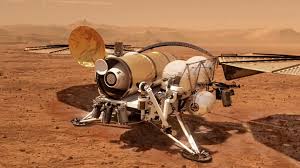NASA’s Mars Sample Return (MSR) mission is a groundbreaking initiative that aims to collect samples from the Martian surface and return them to Earth for in-depth analysis. The program, however, faces significant financial challenges, with current cost estimates reaching a staggering $11 billion. To tackle these issues, NASA has awarded nearly $1.5 million each to seven companies, tasking them with finding innovative, cost-effective solutions for this ambitious mission. This article explores the details of these studies, the hurdles the MSR program faces, and the broader implications for future space exploration.
The Mars Sample Return Mission: An Overview
Objectives of the Mission
The MSR mission’s primary goal is to bring Martian soil and rock samples back to Earth, allowing scientists to study them with advanced technologies that aren’t feasible to transport to Mars. These samples are expected to reveal critical information about the planet’s geological history, climate, and potential for harboring life.
Scientific Importance
Analyzing Martian samples on Earth will provide insights that could answer fundamental questions about the Red Planet. This research could inform future missions and help prepare for human exploration of Mars.
Financial and Logistical Challenges
High Costs of Space Missions
The estimated $11 billion cost of the MSR mission includes the development of cutting-edge technologies, multiple launches, and ensuring the safe return of Martian samples. This hefty price tag has led to concerns about the mission’s feasibility.
Strategies for Cost Management
To address these financial challenges, NASA is exploring various strategies to reduce costs while maintaining mission integrity. The grants awarded to seven companies are part of this effort to find innovative, cost-saving solutions.
The Seven Companies Awarded NASA Grants
Company Overview
NASA selected seven companies based on their expertise and potential to contribute innovative solutions. These companies will explore different aspects of the mission, from propulsion to sample collection and return.
Areas of Focus
The studies will cover a range of critical areas, including advanced propulsion systems, efficient landing technologies, improved sample collection methods, and robust re-entry strategies.
Innovative Solutions Proposed
Advanced Propulsion Systems
One of the key focuses is developing advanced propulsion systems to reduce travel time and fuel costs. Companies are investigating new engine designs and alternative fuels that could make missions more efficient.
Enhanced Sample Collection Methods
Efficiently collecting Martian samples is another priority. Innovations in robotic systems and collection tools are being explored to ensure samples are gathered accurately and effectively, minimizing the need for multiple collection attempts.
Reliable Return Mechanisms
Ensuring the safe return of Martian samples to Earth is crucial. Companies are working on reliable re-entry and landing systems designed to protect the samples from contamination and damage during their journey.
Impact on Future Space Missions
Technological Advancements
The technologies developed through these studies will not only benefit the MSR mission but also future space exploration endeavors. These innovations can be adapted and applied to other missions, enhancing overall mission efficiency and effectiveness.
Sustainable Space Exploration
By finding cost-effective solutions, NASA aims to make space exploration more sustainable. Reducing costs without compromising mission objectives will set a new standard for future missions.
Challenges and Collaborative Solutions
Technical Hurdles
Despite the promising innovations, technical challenges remain. Developing new technologies within budget constraints and ensuring their reliability in space are significant hurdles that need to be addressed.
Collaborative Efforts
Collaboration between NASA, private companies, and international partners is essential to overcoming these challenges. Pooling expertise and resources can accelerate the development and implementation of innovative solutions.
Future Prospects for the Mars Sample Return Mission
Timeline and Milestones
The MSR mission is planned for launch in the late 2020s, with several key milestones leading up to the main mission. These include the development and testing of new technologies and multiple preparatory missions to Mars.
Long-Term Vision
The successful implementation of cost-effective solutions will be crucial for the mission’s success. Continued innovation and collaboration will drive the mission towards achieving its ambitious goals, opening new frontiers in space exploration.
The Mars Sample Return mission represents a significant leap in our quest to explore and understand the universe. NASA’s initiative to award nearly $1.5 million each to seven companies underscores the importance of innovation and collaboration in tackling financial and technical challenges. By addressing these hurdles, NASA aims to set a new precedent for cost-effective space exploration, ensuring the sustainability of future missions and enhancing our understanding of the Red Planet.




